Gazbia Sirry (Egyptian, born 1925) Mankind oil on panel, framed signed "Gazbia" and dated "97" (lower right), executed in 1997 55 x 48cm (21 5/8 x 18 7/8in). Fußnoten Provenance: Property from a private collection, Alexandria Gazbia Sirry was part of a group of female artists who came to prominence in the 1950s during the Nasser Era in Egypt. Throughout her sixty-year career, she has responded to shifts in the political, social, and artistic climates in Egypt. She is well respected for her richly colored canvases as well as her savvy perseverance in the occasional turbulence of the Egyptian art world. Sirry was born in 1925 in Cairo into a wealthy family, and she came of age as an artist during the years surrounding the 1952 Free Officers Revolution. After graduating from the Higher Institute of Art Education for Women Teachers in 1950 (Currently the Faculty of Art Education, Helwan University), she earned government scholarships that sent her abroad, where she pursued her postgraduate studies with Marcel Gromaire in Paris in 1950, and then further studies at the Egyptian Academy in Rome 1952 and at the Slade School in London, in 1953. The government also supported her art making in Egypt. Her early paintings are characterized by depictions of strong, imposing female figures of all social classes. Through this variety, she emphasized that one singular, anonymous woman could not represent Egypt, but rather many different women defined the new Egyptian Republic. She painted these works in vibrant colors with strong black contours and a slight flattening of the picture plane, which became her signature style. As the 1950s and 1960s progressed, the prominent figures in her early work faded until 1967, when they disappeared altogether. Her canvases still depicted Egyptian figures, but in the late 1950s, her backgrounds became increasingly abstract as her interest in non-representational color and line grew. This fading can perhaps be attributed to her increasing disillusionment with the Egyptian government. In 1959, the government imprisoned her for several days, and her husband for three years due to their alleged Communist activity. Though she recalls her own experience with pride, her husband's imprisonment dealt a severe blow to her faith in the Nasser government. In 1965, Sirry earned a fellowship to join the Huntington Hartford Foundation in Pacific Palisades, California, an artists' colony in the Santa Monica Mountains. Though she had travelled and studied often in Europe in the 1950s, this was her first visit to the United States. According to the artist, this experience had a profound impact on her art practice. Though she painted primarily representational works while at the colony, the experience introduced her to the American style of abstract Expressionism. In 1967, figural representations vanished abruptly from her work. Some scholars, such as Jessica Winegar, have posited that this shift was due to the trauma of the Six-Day War in 1967, and point to a painting of the same year, Grief (Museum of Modern Egyptian Art, Cairo), as a transitional piece. The work depicts a self-portrait of a floating head in a fiery abstract landscape backed by a pyramid. However, her rising unease with the Egyptian government paired with her experience at the Hartford foundation probably also led to this transformation. Throughout the 1970s, Sirry painted abstract "cityscapes" – complex grids that evoke urban skylines simply but are primarily exercises in color and shape. Sirry continues making art to this day, living and working in the affluent neighbourhood of Zamalek in Cairo. She has exhibited both locally and internationally, in over 100 exhibitions. She remains one of the most significant artists of her generation. She still responds to political shifts in Egypt, reacting to the January 25th Revolution with an exhibit of new work in the Spring of 2012.
Gazbia Sirry (Egyptian, born 1925) Mankind oil on panel, framed signed "Gazbia" and dated "97" (lower right), executed in 1997 55 x 48cm (21 5/8 x 18 7/8in). Fußnoten Provenance: Property from a private collection, Alexandria Gazbia Sirry was part of a group of female artists who came to prominence in the 1950s during the Nasser Era in Egypt. Throughout her sixty-year career, she has responded to shifts in the political, social, and artistic climates in Egypt. She is well respected for her richly colored canvases as well as her savvy perseverance in the occasional turbulence of the Egyptian art world. Sirry was born in 1925 in Cairo into a wealthy family, and she came of age as an artist during the years surrounding the 1952 Free Officers Revolution. After graduating from the Higher Institute of Art Education for Women Teachers in 1950 (Currently the Faculty of Art Education, Helwan University), she earned government scholarships that sent her abroad, where she pursued her postgraduate studies with Marcel Gromaire in Paris in 1950, and then further studies at the Egyptian Academy in Rome 1952 and at the Slade School in London, in 1953. The government also supported her art making in Egypt. Her early paintings are characterized by depictions of strong, imposing female figures of all social classes. Through this variety, she emphasized that one singular, anonymous woman could not represent Egypt, but rather many different women defined the new Egyptian Republic. She painted these works in vibrant colors with strong black contours and a slight flattening of the picture plane, which became her signature style. As the 1950s and 1960s progressed, the prominent figures in her early work faded until 1967, when they disappeared altogether. Her canvases still depicted Egyptian figures, but in the late 1950s, her backgrounds became increasingly abstract as her interest in non-representational color and line grew. This fading can perhaps be attributed to her increasing disillusionment with the Egyptian government. In 1959, the government imprisoned her for several days, and her husband for three years due to their alleged Communist activity. Though she recalls her own experience with pride, her husband's imprisonment dealt a severe blow to her faith in the Nasser government. In 1965, Sirry earned a fellowship to join the Huntington Hartford Foundation in Pacific Palisades, California, an artists' colony in the Santa Monica Mountains. Though she had travelled and studied often in Europe in the 1950s, this was her first visit to the United States. According to the artist, this experience had a profound impact on her art practice. Though she painted primarily representational works while at the colony, the experience introduced her to the American style of abstract Expressionism. In 1967, figural representations vanished abruptly from her work. Some scholars, such as Jessica Winegar, have posited that this shift was due to the trauma of the Six-Day War in 1967, and point to a painting of the same year, Grief (Museum of Modern Egyptian Art, Cairo), as a transitional piece. The work depicts a self-portrait of a floating head in a fiery abstract landscape backed by a pyramid. However, her rising unease with the Egyptian government paired with her experience at the Hartford foundation probably also led to this transformation. Throughout the 1970s, Sirry painted abstract "cityscapes" – complex grids that evoke urban skylines simply but are primarily exercises in color and shape. Sirry continues making art to this day, living and working in the affluent neighbourhood of Zamalek in Cairo. She has exhibited both locally and internationally, in over 100 exhibitions. She remains one of the most significant artists of her generation. She still responds to political shifts in Egypt, reacting to the January 25th Revolution with an exhibit of new work in the Spring of 2012.


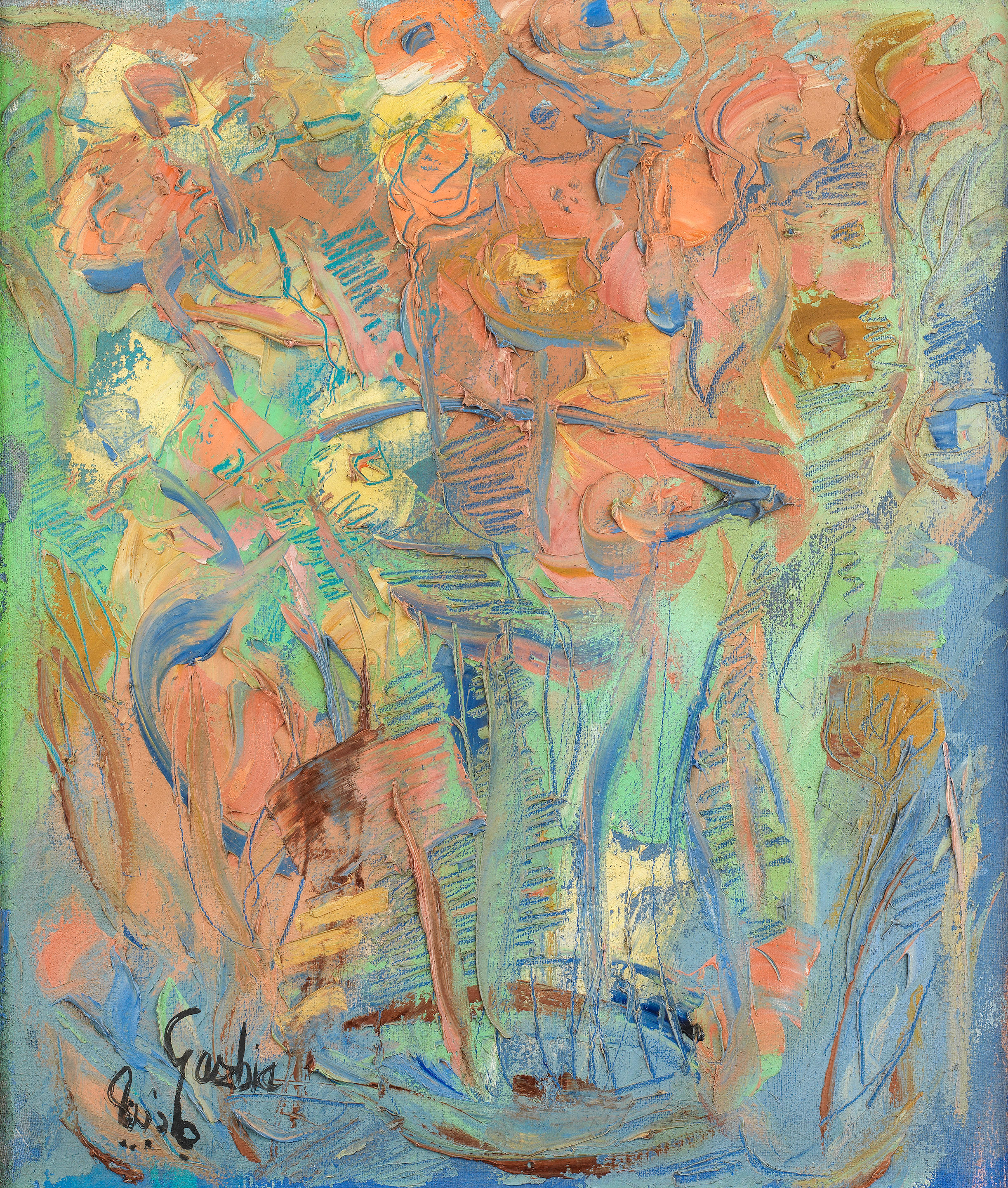
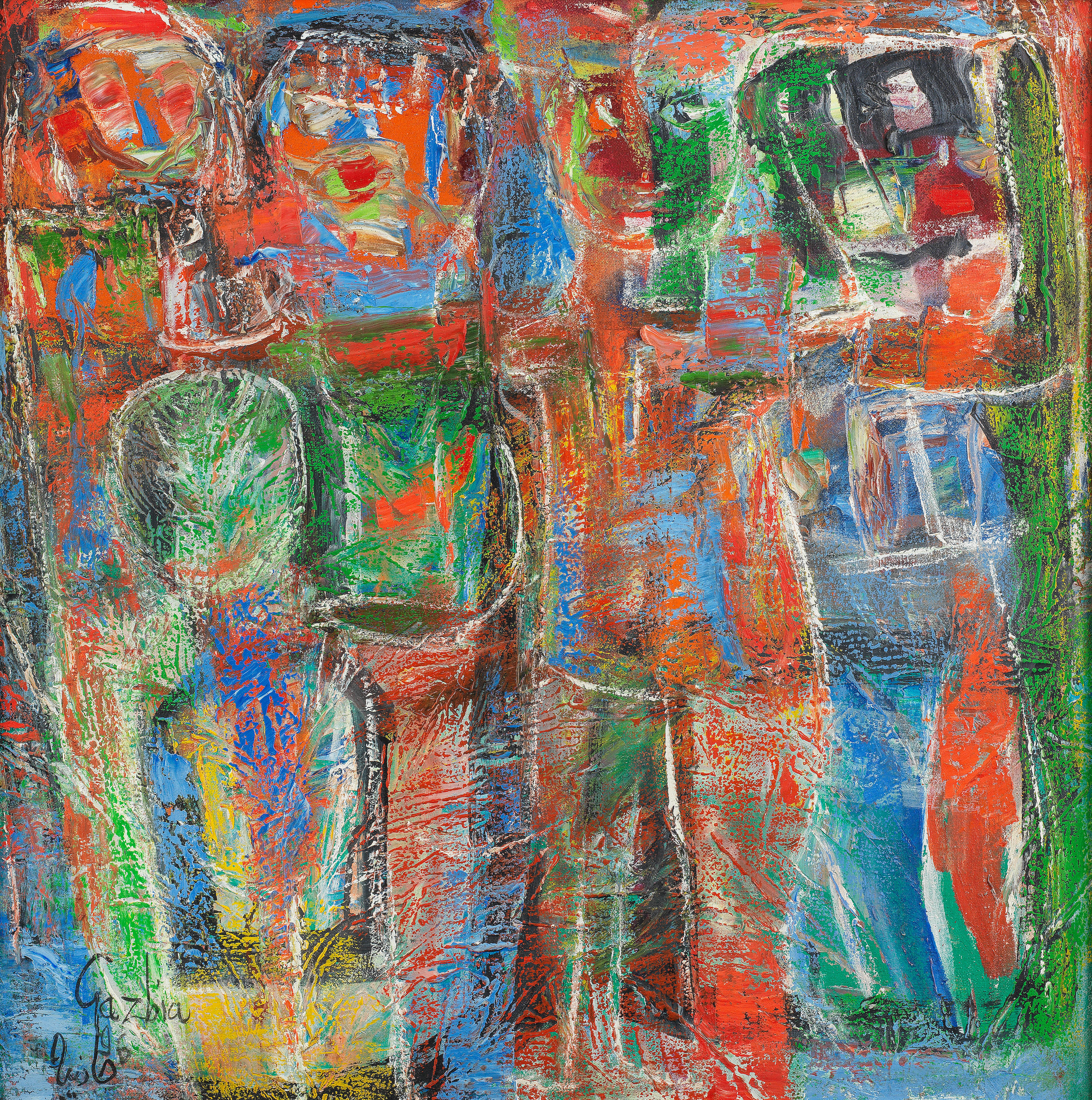

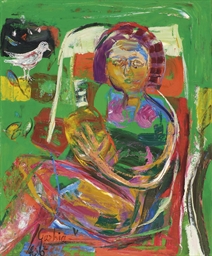

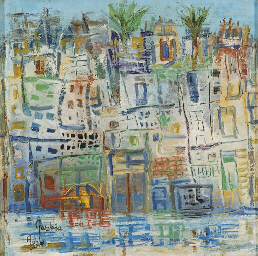
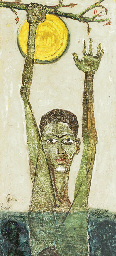
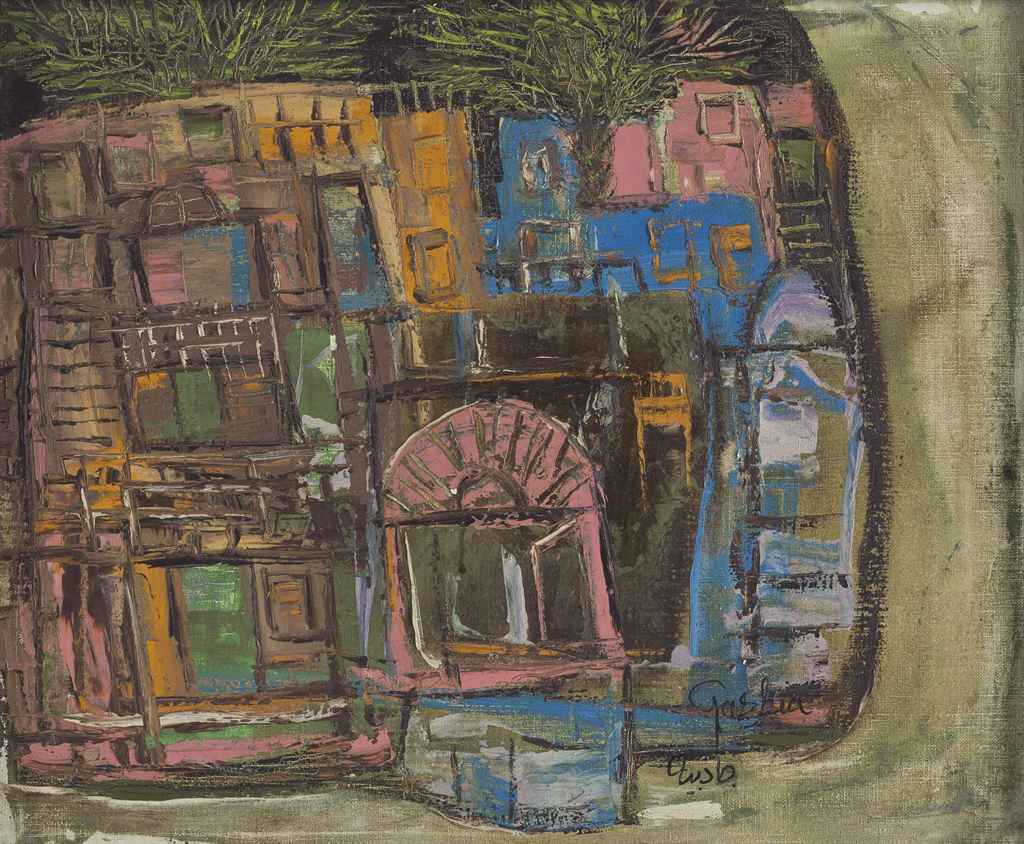
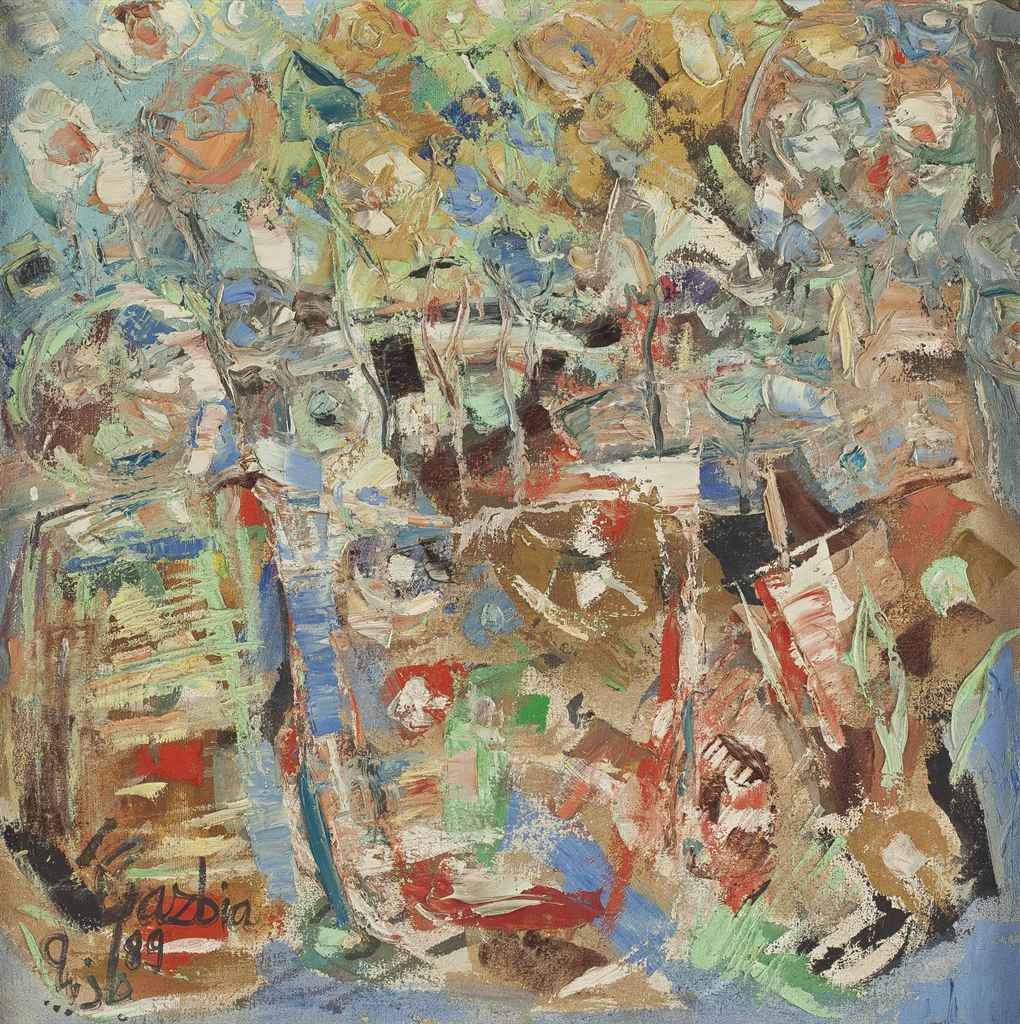



.jpg)
Testen Sie LotSearch und seine Premium-Features 7 Tage - ohne Kosten!
Lassen Sie sich automatisch über neue Objekte in kommenden Auktionen benachrichtigen.
Suchauftrag anlegen